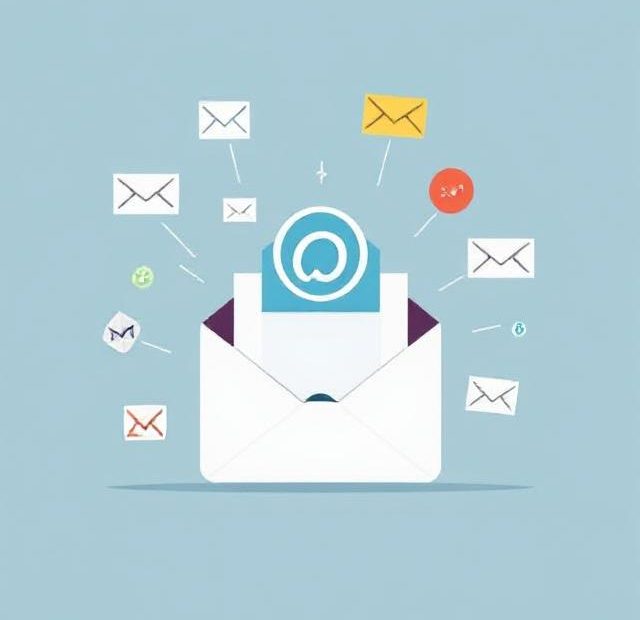Your email subject line is your first — and sometimes only — chance to grab your audience’s attention. No matter how brilliant the content inside, if your email isn’t opened, it won’t matter. That’s why writing high-converting email subject lines is essential to the success of any email marketing campaign.
In this article, you’ll learn the key elements of a great subject line, proven formats that work, and best practices to help you boost your open rates and get more clicks.
Why Subject Lines Matter
According to research, 47% of recipients open an email based on the subject line alone, while 69% mark it as spam just from the subject line. This tiny line of text plays a massive role in determining the fate of your message.
A good subject line should:
-
Spark curiosity or urgency
-
Be relevant to the audience
-
Clearly communicate a benefit
-
Align with the content inside the email
Mastering this one small piece of copywriting can have a big impact on your entire email marketing strategy.
1. Keep It Short and Sweet
Most people check their email on mobile devices, where screen space is limited. That means subject lines that are too long will get cut off.
Best practice: Keep your subject lines under 50 characters whenever possible.
Examples:
-
“Your free guide is inside”
-
“Last chance to save 30%”
-
“New recipe ideas for busy weeks”
Shorter subject lines are also easier to scan quickly, especially in crowded inboxes.
2. Use Personalization
Including the recipient’s name or other personalized details can boost open rates significantly. Tools like Mailchimp, ActiveCampaign, or ConvertKit make it easy to insert personalization tokens.
Examples:
-
“John, your exclusive offer is inside”
-
“We picked these just for you”
Why it works: People love seeing their own name and feel more connected to messages tailored to them.
3. Create Curiosity (But Avoid Clickbait)
Curiosity-driven subject lines make people want to find out what’s inside the email — but they must deliver on the promise inside.
Examples:
-
“You won’t believe this email strategy…”
-
“One tiny tweak boosted our sales 300%”
Avoid misleading subject lines just to get clicks. That damages trust and increases unsubscribes.
4. Use Numbers and Lists
Numbers are eye-catching and offer structure. People know what to expect and that it won’t take long to read.
Examples:
-
“7 email hacks you need today”
-
“3 reasons your campaigns are underperforming”
Odd numbers often perform better than even ones, and list-based content is more scannable for busy readers.
5. Ask Engaging Questions
Questions invite your audience to mentally participate and open the email to find an answer.
Examples:
-
“Struggling to write better emails?”
-
“Want more traffic from email?”
Make sure the question is relevant to your audience’s pain point or interest.
6. Use Urgency and Scarcity
FOMO (fear of missing out) is a powerful motivator. Add urgency when appropriate — just don’t overuse it or it’ll lose effectiveness.
Examples:
-
“Only 3 hours left!”
-
“Your 25% discount expires tonight”
Time-sensitive subject lines can encourage immediate action and drive conversions fast.
7. Test Emojis and Symbols (Use Sparingly)
Emojis can add visual flair and help your email stand out. But they should match your tone and audience.
Examples:
-
“🔥 Hot deals for summer”
-
“📦 Your package is almost here!”
Always test emojis — they don’t render well in every email client.
8. A/B Test Your Subject Lines
Never assume you know what works best. Run A/B tests to compare variations and optimize based on real performance data.
Test different elements like:
-
Length
-
Tone (funny vs. serious)
-
Personalization
-
Use of numbers or questions
Over time, this will help you craft high-converting email subject lines tailored to your audience.
9. Match the Subject Line with the Email Content
Nothing kills trust faster than a misleading subject line. If your email promises a free gift or a big discount, make sure the content delivers on that promise.
Tip: Avoid bait-and-switch tactics. Always align your subject line with the value of the email.
10. Study Winning Examples
Sometimes the best way to learn is to look at what works. Here are a few examples from brands with consistently strong email performance:
-
Uber: “Your Sunday ride’s on us”
-
Headspace: “Feeling stressed?”
-
Trello: “Your productivity report card is here”
-
Spotify: “2019 Wrapped is ready for you”
Analyze why these work — clear value, emotional appeal, or personalization — and try adapting similar structures to your campaigns.
Final Thoughts
Crafting high-converting email subject lines doesn’t require magic — it takes strategy, testing, and understanding your audience. A subject line should act like a headline: attention-grabbing, benefit-driven, and relevant to the reader.
Let’s recap key tips:
-
Keep it short and personalized
-
Add urgency or curiosity (but no clickbait)
-
Use numbers, questions, and emojis wisely
-
A/B test for consistent improvement
-
Always match subject line to content
With the right approach, your subject lines can transform your email open rates — and ultimately boost conversions. So don’t treat them as an afterthought. Make them your secret weapon.
Also, you can learn more about Email Campaign Examples here.
